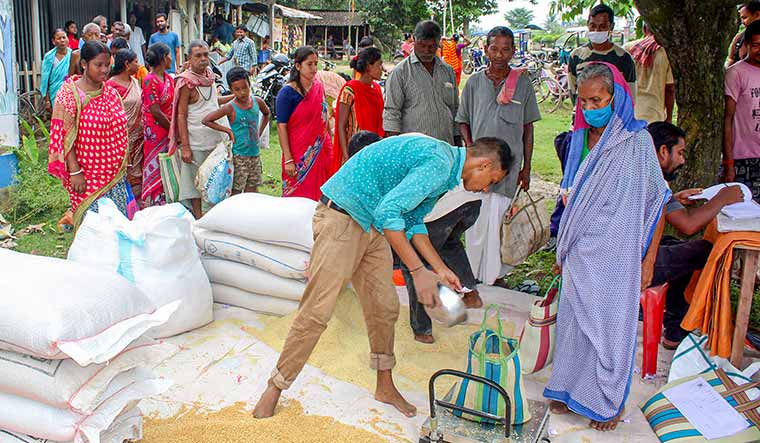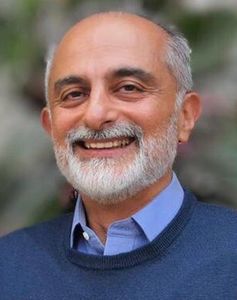HUMAN CAPITAL
THE PRIME MINISTER’S vision for a Viksit Bharat by 2047 is a mandate for inclusive growth, ‘Sab ka saath, Sab ka Vikas’. This clarion call implies that we will leave no one behind in our quest to become a developed nation by 2047, when every citizen will enjoy a life of dignity anchored by fulfilled basic human needs.
The focus of the media coverage of Viksit Bharat has mainly been on infrastructure development, expanding manufacturing (Make in India), and exports and skill development. However, the focus should be on the citizen because Viksit Bharat requires every citizen to be a Viksit Bharatiya. This vision has three aspects: economic, human, and social, each of which requires a rapid transformation in the next decade. We focus on the individual citizen and her family (household) to indicate the policy reforms required now to enable each transformation.
ECONOMIC TRANSFORMATION
As per the World Bank’s classification of high-income countries in 2023, the minimum per capita income level was $13,200 (about Rs10 lakh) per annum. This would require income levels in India to increase about five times by 2047, implying an annual growth rate of about 7.5 per cent for personal incomes, which translates to approximately 8.5 per cent annual GDP growth. To achieve this, the organised sector, which generates only 15 per cent of jobs in India at present, will have to grow tremendously to provide high-wage jobs for about 80 per cent of the working population. This implies a growth rate of formal employment at about 10 per cent per annum. In 2023, the organised sector provided only about 85 million jobs for about 640 million workers in India. How can the organised sector expand and create high-wage jobs for a Viksit Bharatiya?
First and foremost, the jobs must come from the manufacturing sector. This requires a lot of public investment. We suggest that investing in 1,000 to 1,500 Viksit Bharat manufacturing clusters (in all 788 districts) with plug-and-play factory facilities, which accommodate about 200 SMEs every year, will create about four to six million manufacturing jobs annually.
Second, tourism hubs can be created in at least 2,000 locations (two to three in each district) over a decade, with about 750-1,000 hotel rooms each. This would create about 5,000 jobs at each hub, which is about 10 million jobs. This will require investment of about Rs32 lakh crore ($400 billion) over a decade, most of which will come from the private sector. Capital expenditure for infrastructure development always creates jobs, first in manufacturing and construction, and then in areas with increased demand for goods and services. The government is already ramping up capex in a big way. The third stream of job creation would be the government’s increased capex. Studies reveal that for an additional government capital expenditure of Rs10 lakh crore per annum, about one million jobs are created annually.
Further, private investment in higher education will also create high-wage jobs, as will investment in transport, logistics, trade, insurance, banking and health care.
AUGMENTING HUMAN CAPITAL
Three main demand-side factors will promote organised sector jobs in India: sustainability, new travel trends, and rapidly changing consumer preferences. These drivers of job growth will propel the development of skills, organisations and markets in India for the next decade, creating high-wage jobs.
On the supply side, there are three positive factors. First, the much-talked-about ‘demographic dividend’ is both an opportunity and a threat. On the one hand, it will lead to a rapid increase in the workforce for another two decades. However, improving the quality of young workers entering the workforce also requires massive investments in the education sector. Whereas primary school education is essentially the responsibility of the government, significant investments in higher and vocational education will have to come from the private sector.
Second, the growth of enterprises across all sectors in India is creating new market dynamics that open up investment opportunities, create jobs and satisfy consumer needs. Capital market and legal reforms are required to build a culture of trust that enables confidence in long-term contracts. A culture of equity capital must also replace traditional family sources of capital to unleash the entrepreneurial capacities of young Indians from diverse backgrounds.
Third, research and development, innovation and diffusion of new technologies must grow beyond high-tech sectors by fostering a Temper for Innovation, Creativity and Knowledge (TICK). Our education system has focused on structured learning for far too long. The contemporary landscape demands a paradigm shift: the education system must equip learners with a broader set of skills centred on knowledge acquisition, critical thinking, entrepreneurship, creativity and innovation. By doing so, we empower individuals not only to thrive in the current landscape but also to shape the future through their ingenuity and adaptability.
Another important issue that merits serious attention is that only some universities in India conduct frontier research. Vast and consistent public investment in basic research is required to spur scientific and technological advancement. The obvious question is, where do we garner these resources from? We suggest that the higher education cess on income tax, currently about Rs70,000 crore per annum, can be ring-fenced and dedicated exclusively to basic research so that at least 400 research universities of national importance are provided significant research grants of Rs150 crore to Rs200 crore each per annum.
BUILDING SOCIAL SECURITY
Rising income and wealth inequality have been a concomitant of rapid economic growth in most developing countries, including socialist systems like China. The trends in India are no different. This has led to an increase in popular demands for income transfers and social security, which have been reflected in our political discourse over the past two decades.
However, these programmes do not coalesce into a comprehensive social security net that provides for basic human needs. Under current circumstances, it may not be possible for India’s Central and state governments to provide for the liberal social security benefits seen in developed economies, which typically account for about 20 per cent of the GDP and over half the government budget expenditure. However, it is necessary to provide a livelihood with dignity for every Indian (woman) head of household to ensure each member of her household has a decent, healthy and productive life. This would include following five basic human needs: nutrition, health care, school education, habitat and access to utilities (water, sewerage, waste management, energy and telecom). We recommend that about 2 per cent of the GDP be dedicated to this cause.
To illustrate this, let us suppose these basic human needs cost a woman head of household Rs1.32 lakh annually, and her household income is only Rs90,000. In that case, the government will provide an income gap support of Rs42,000. This is a reverse income tax, which flows from the government to each citizen/household that is below the dignity line (atma samman rekha). We argue that for a household of four persons, an income level of about Rs1.32 lakh per annum (Rs11,000 a month) is the minimum required to define the dignity line. For four persons, this is only about 15 per cent of the average per capita income of India, which is estimated to be about Rs2.10 lakh in 2023. We estimate that about 35 to 40 per cent of households would fall below the dignity line.
The finances for this will have to come from rationalising and re-targeting the existing subsidies for food, fertiliser, electricity, fuel, etc. Even after accounting for these existing subsidies, which amount to about Rs4 lakh crore per annum, additional resources in the range of Rs2 lakh crore will be required. This annual transfer of 06 lakh crore can be achieved over three to five years. A portion of this requirement can be met by collecting all corporate social responsibility funds (estimated to be Rs60,000 crore per annum) into a national pool.
EVERY BHARATIYA MATTERS
To bridge the inevitable outcome gaps caused by rapid progress, we require investments in physical and human capital, market reforms and policy coordination between the Central and state governments. The most immediate transformations will be necessary in the government itself. It will have to allocate adequate resources and craft new policies to drive economic, human and social development to build a Viksit Bharat with a Viksit Bharatiya!
Views expressed by the authors are personal
Singh and Tewari are former chief secretaries of Punjab




